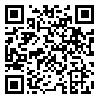BibTeX | RIS | EndNote | Medlars | ProCite | Reference Manager | RefWorks
Send citation to:
URL: http://irje.tums.ac.ir/article-1-5168-en.html
2- MPH Student, School of Public Health ,Tehran University of Medical Sciences, Tehran, Iran
3- School of Medicine , Urmia University of Medical Sciences, Urmia, Iran
4- PhD, Professor, Department of Epidemiology and Biostatistics, School of Public Health, Tehran University of Medical Sciences, Iranian Epidemiological Association, Tehran, Iran
5- PhD Associate Professor, Department of Epidemiology and Biostatistics, School of Public Health, Tehran University of Medical Sciences, Tehran, Iran
Background & Objectives: The world population is growing old. The rising proportion of the elderly is creating new health care challenges in the current century. This study aimed to determine the quality of life and the associated factors in the elderly population of Azerbaijan district in the city of Tehran, Iran.
Methods: This cross-sectional study was conducted on 287 elderly persons aged 60 and older. Participants were selected through systemic random sampling. The WHOQOL-BREF questionnaire, the Activities of Daily Living (ADL) questionnaire, and a questionnaire for demographic characteristics were used for data collection. Each domain was given a score between 0 to100 based on the WHO manual. The final variables were determined in a multivariate linear regression model using SPSS16.
Results: The mean score of the 4 domains of quality of life (physical, psychological, environmental, and social health) of the elderly population living in Azerbaijan district was 58.41, 53.13, 59.53, and 42.82, respectively.
Conclusion: A variety of correlates affect the quality of life of the elderly. Recognizing and considering these factors are important for planning more effective programs for the elderly and empowering them.
Received: 2014/05/30 | Accepted: 2014/05/30 | Published: 2014/05/30
| Rights and permissions | |
 |
This work is licensed under a Creative Commons Attribution-NonCommercial 4.0 International License. |





